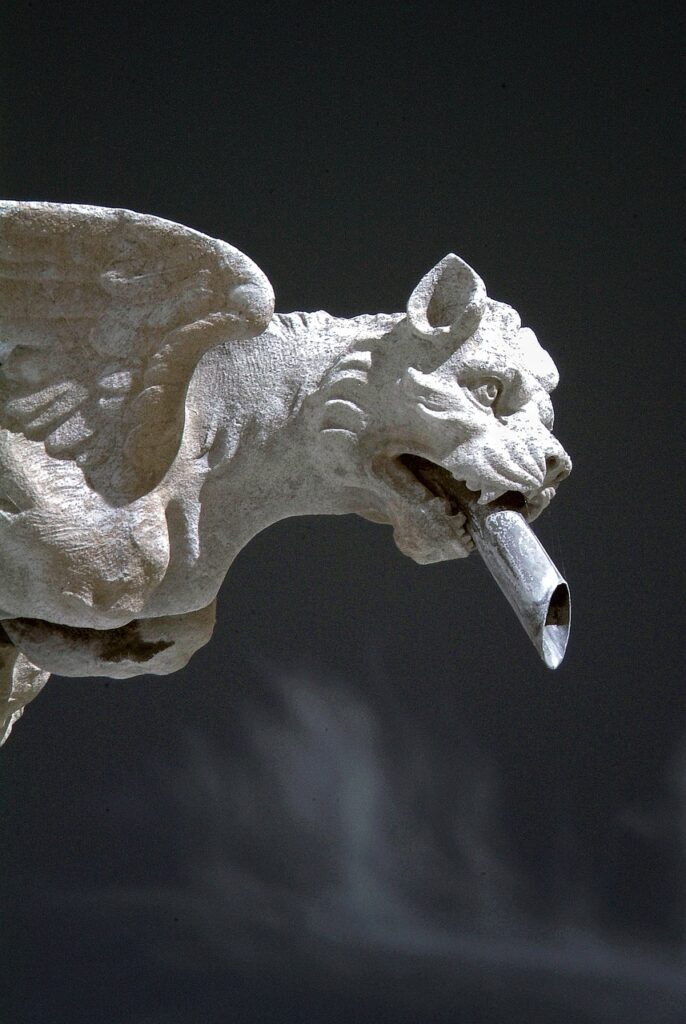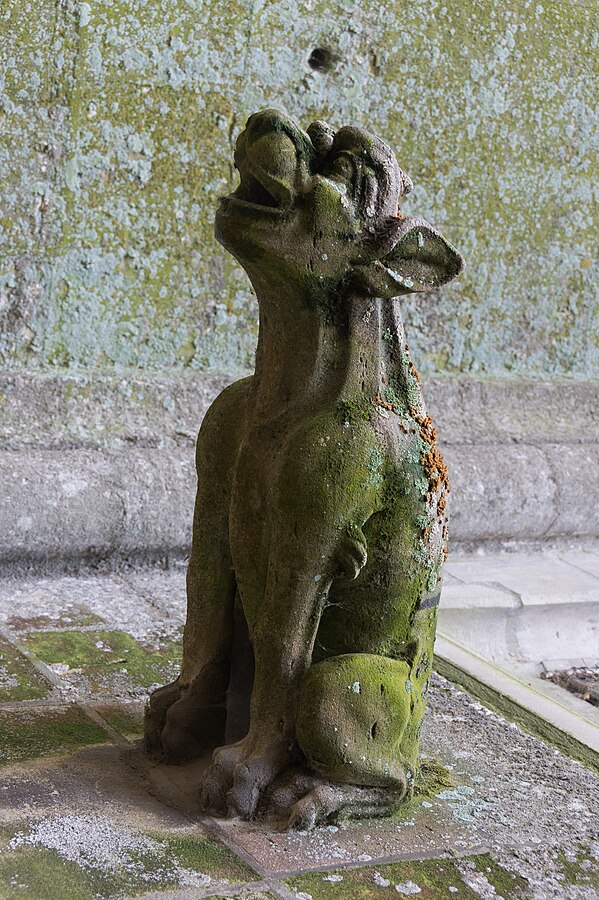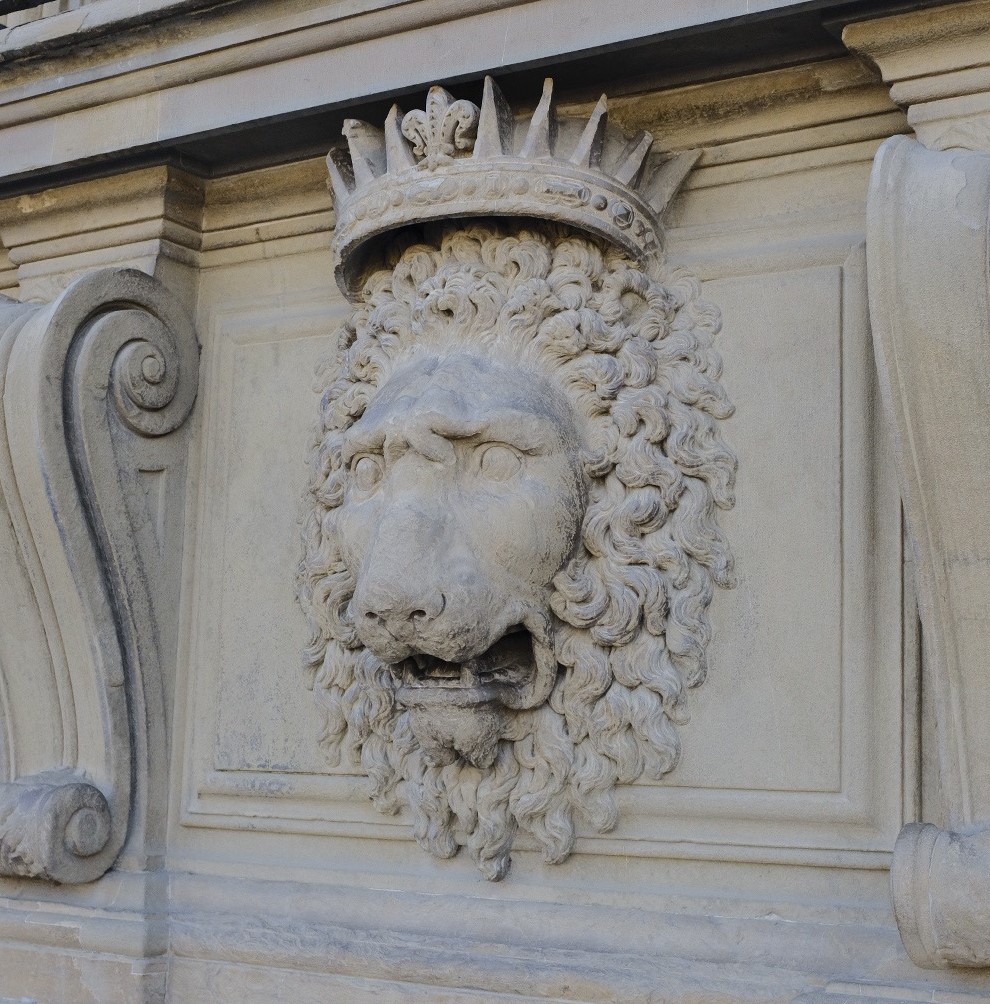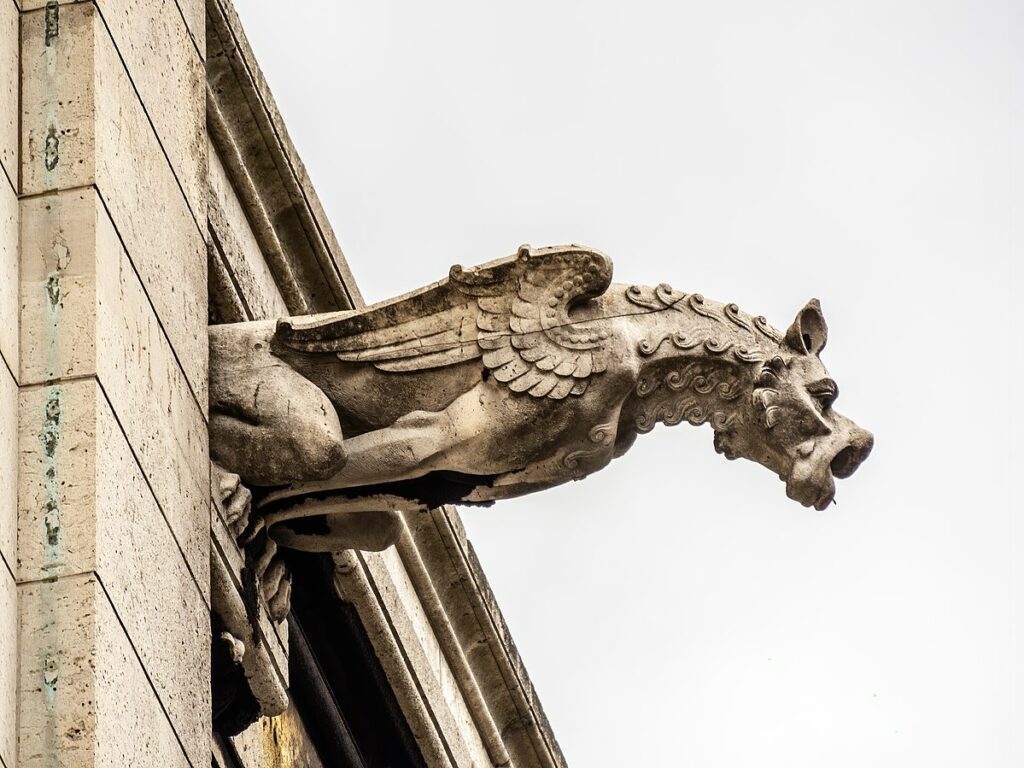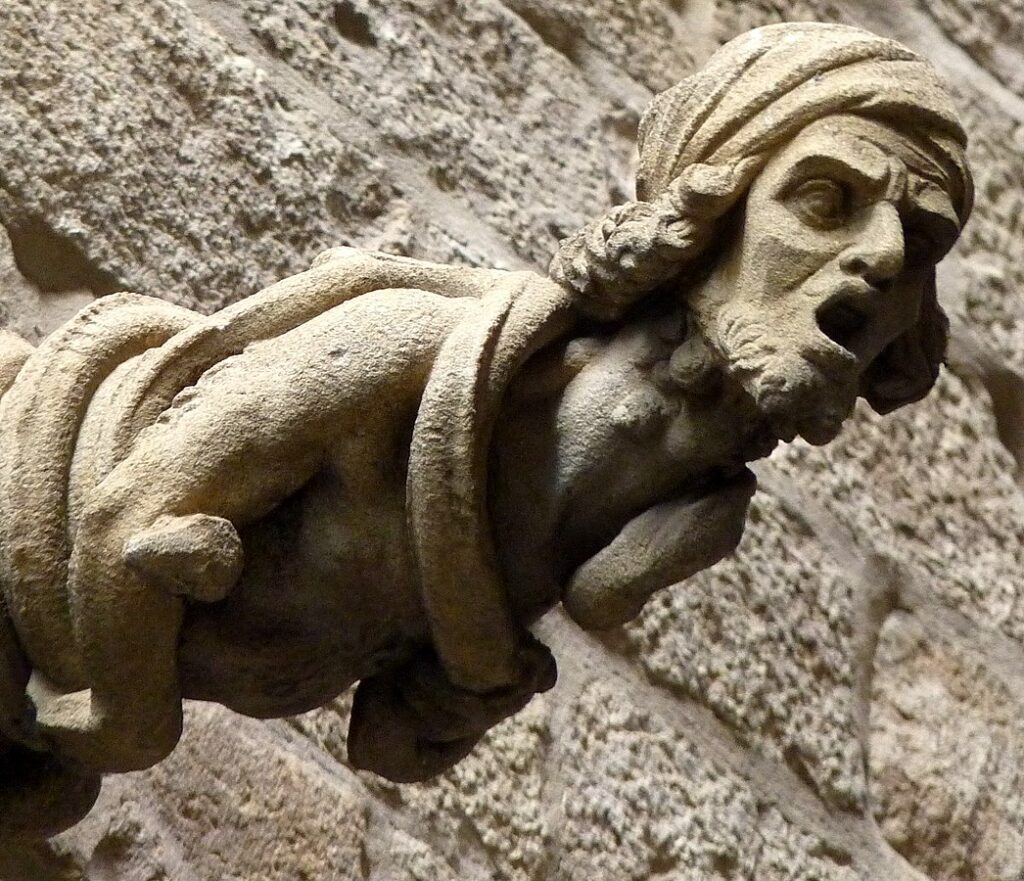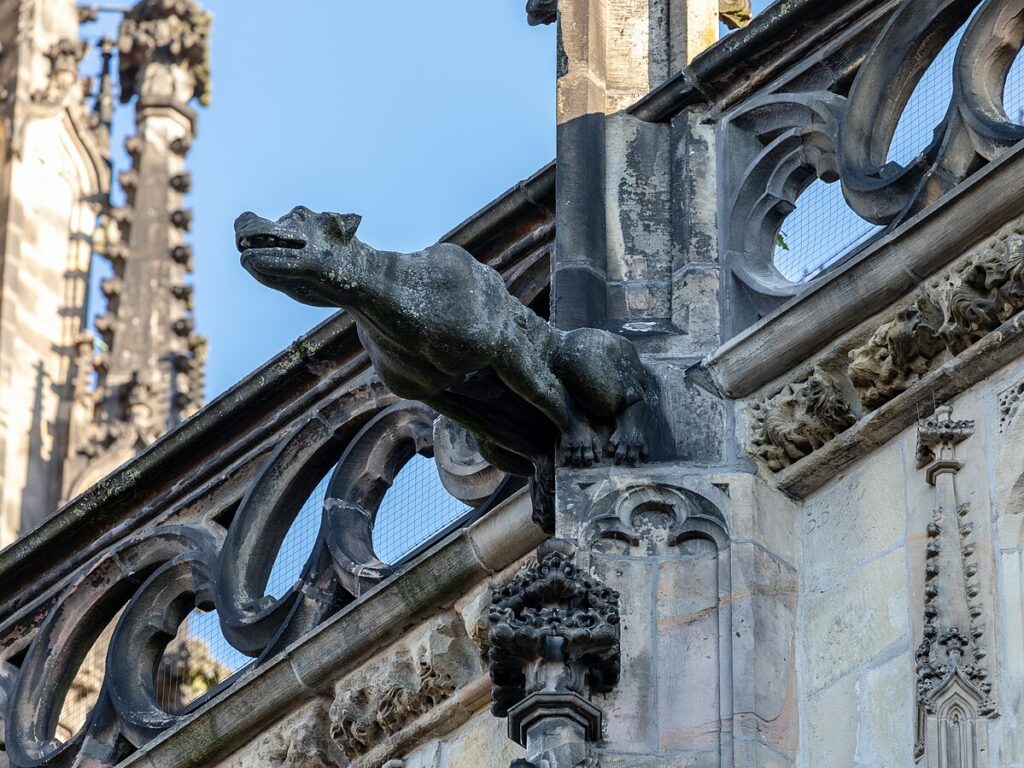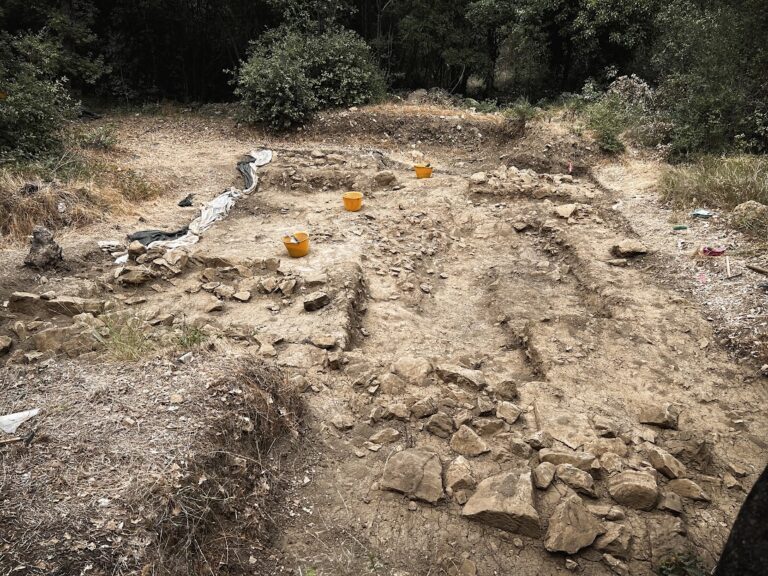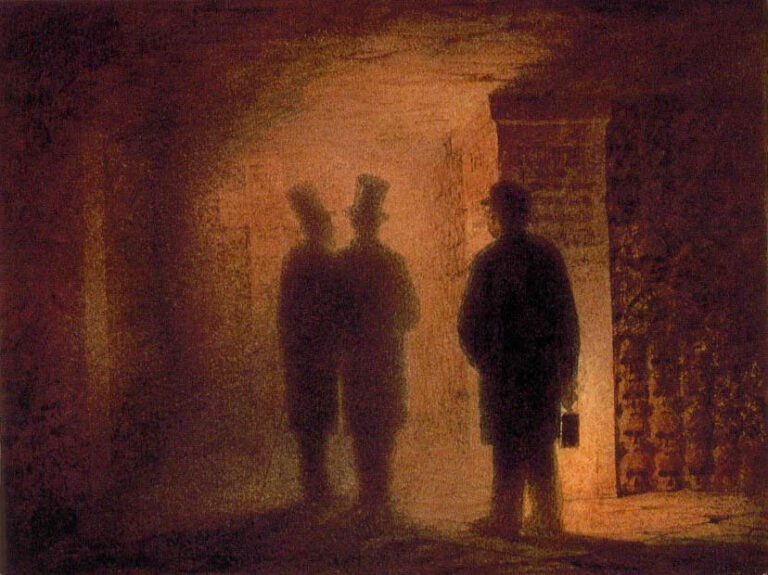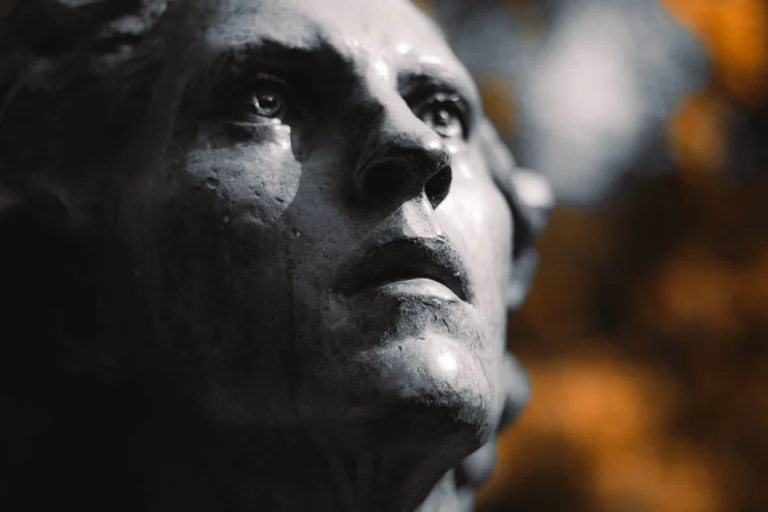The Mysterious World of Gargoyles
Whispers of Stone
As the veil between worlds thins and shadows lengthen this Halloween season, there is no better time to delve into the enigmatic and haunting world of gargoyles. Perched high above on cathedrals and historic buildings, these stone sentinels have captivated imaginations and stirred whispers of the supernatural for centuries. But what are the origins of these ominous figures, and what purpose did they serve? This article aims to unearth the facts and demystify the fascinating history of gargoyles.
The Gargoyle’s Gothic Genesis
The term “gargoyle” originates from the French word ‘gargouille’, meaning “throat” or “gullet”. The connection between the word and the stone creature lies in the gargoyle’s original function: to serve as a water spout. Designed to channel rainwater away from the sides of a building to prevent erosion, these functional sculptures became a staple in medieval architecture.
However, the history of gargoyles dates back even further than the Gothic cathedrals of Europe. Ancient Egyptians, Greeks, and Romans all utilized gargoyle-like structures in their architecture, typically in the form of lion heads. The medieval era, however, saw the transformation of these functional sculptures into the monstrous and grotesque figures we associate with gargoyles today.
Symbols of Protection and Penance
Beyond their practical use, gargoyles held symbolic significance. In an era rife with superstition and religious fervor, these stone creatures were believed to ward off evil spirits and protect the buildings they adorned. They were also a reflection of the medieval mindset, with their demonic appearances serving as a visual reminder of the hellfire and damnation that awaited sinners.
The Anatomy of a Gargoyle
Gargoyles come in all shapes and sizes, from menacing demons and mythical creatures to malformed humans and animals. Despite their diversity, most share common features such as exaggerated facial expressions, wings, and claws. The intricate details and craftsmanship of these stone creatures are a testament to the skill of medieval masons.
The Modern-Day Legacy
Today, gargoyles continue to capture the public’s imagination, transcending their architectural origins to become cultural icons in their own right. They appear in literature, film, and art, often as guardians or ominous omens. The preservation of historic buildings has also ensured that these stone sentinels will continue to gaze down upon us for generations to come.
As the Halloween season casts its spell and the night air fills with whispers of the supernatural, the enigmatic gargoyles stand as timeless sentinels of stone and mystery. Their eerie visages and storied history serve as a captivating reminder of an era shrouded in superstition, artistry, and awe. So, the next time you find yourself beneath the watchful gaze of a gargoyle, remember the centuries-old tale of craftsmanship, protection, and mystery carved in stone.
More about Gargoyles
Did you know that the world’s oldest known gargoyle is not found on a medieval cathedral, but rather on an ancient Egyptian temple? Dating back over 13,000 years, this fascinating piece of history can be found on the Temple of Sobek and Haroeris in Kom Ombo, Egypt. The gargoyle is shaped like a lion’s head, a popular choice in ancient cultures, and it served the practical purpose of directing rainwater away from the temple’s precious reliefs and carvings.
This early example of a gargoyle showcases not only the ancient Egyptians’ architectural prowess but also their foresight in preserving their artistic legacy against the elements. So, the next time you marvel at a menacing medieval gargoyle, remember that these stone creatures have roots reaching back into the sands of ancient Egypt!
If you were captivated by our exploration of the enigmatic world of gargoyles, delve deeper into the medieval era with our insightful article on the Black Plague. Simply click the button below to continue your archaeological journey!

